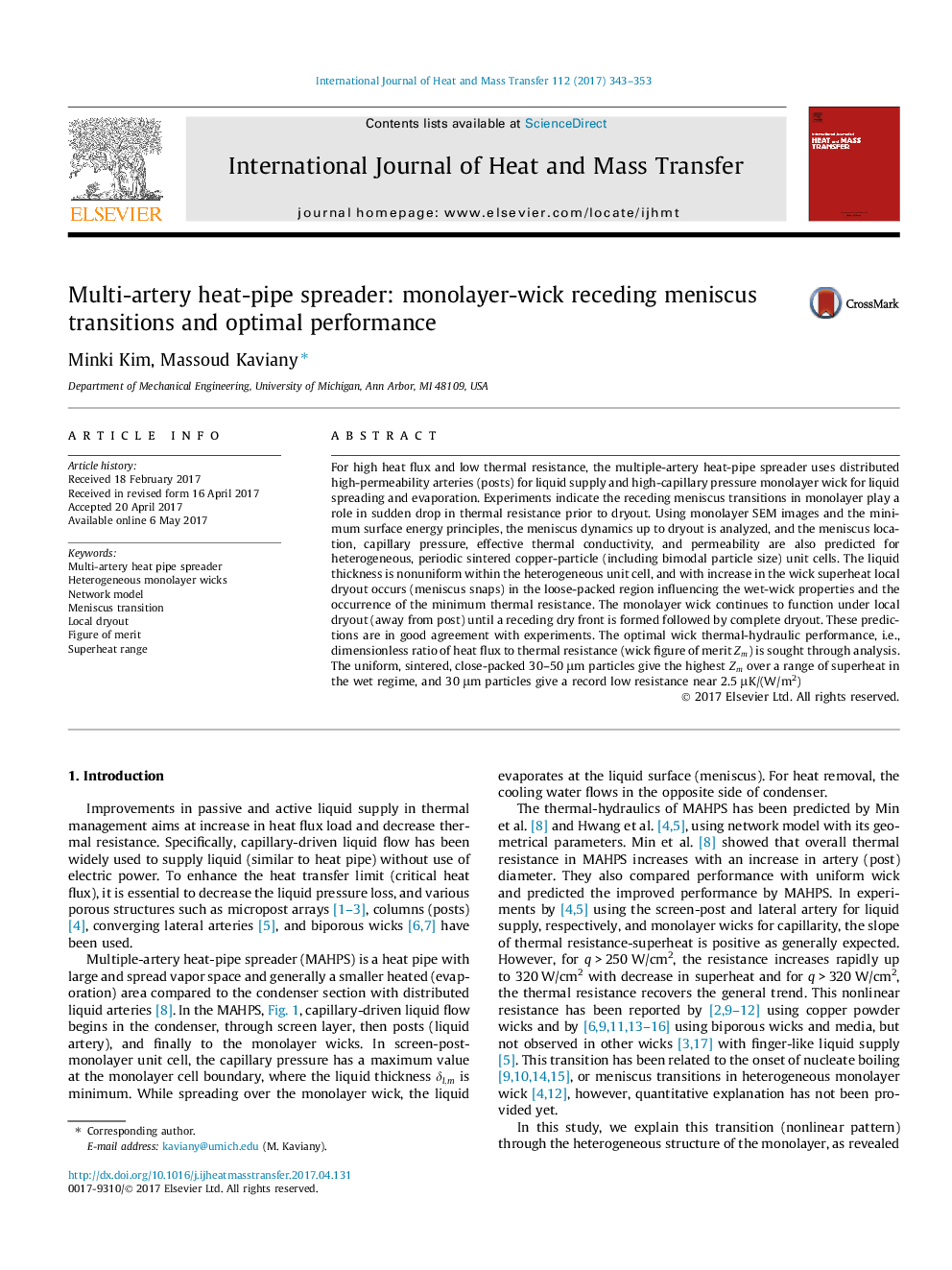| Article ID | Journal | Published Year | Pages | File Type |
|---|---|---|---|---|
| 4993663 | International Journal of Heat and Mass Transfer | 2017 | 11 Pages |
Abstract
For high heat flux and low thermal resistance, the multiple-artery heat-pipe spreader uses distributed high-permeability arteries (posts) for liquid supply and high-capillary pressure monolayer wick for liquid spreading and evaporation. Experiments indicate the receding meniscus transitions in monolayer play a role in sudden drop in thermal resistance prior to dryout. Using monolayer SEM images and the minimum surface energy principles, the meniscus dynamics up to dryout is analyzed, and the meniscus location, capillary pressure, effective thermal conductivity, and permeability are also predicted for heterogeneous, periodic sintered copper-particle (including bimodal particle size) unit cells. The liquid thickness is nonuniform within the heterogeneous unit cell, and with increase in the wick superheat local dryout occurs (meniscus snaps) in the loose-packed region influencing the wet-wick properties and the occurrence of the minimum thermal resistance. The monolayer wick continues to function under local dryout (away from post) until a receding dry front is formed followed by complete dryout. These predictions are in good agreement with experiments. The optimal wick thermal-hydraulic performance, i.e., dimensionless ratio of heat flux to thermal resistance (wick figure of merit Zm) is sought through analysis. The uniform, sintered, close-packed 30-50 μm particles give the highest Zm over a range of superheat in the wet regime, and 30 μm particles give a record low resistance near 2.5 μK/(W/m2)
Keywords
Related Topics
Physical Sciences and Engineering
Chemical Engineering
Fluid Flow and Transfer Processes
Authors
Minki Kim, Massoud Kaviany,
